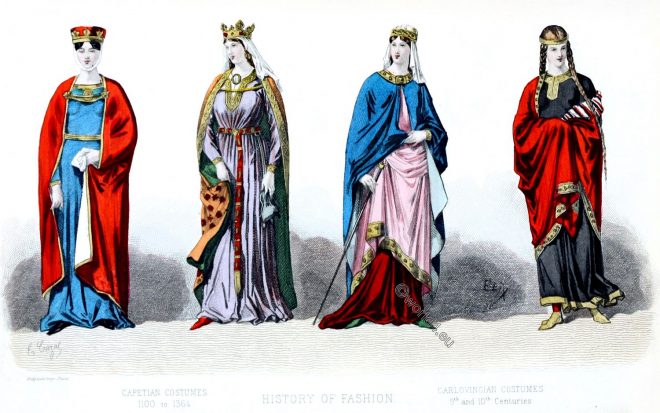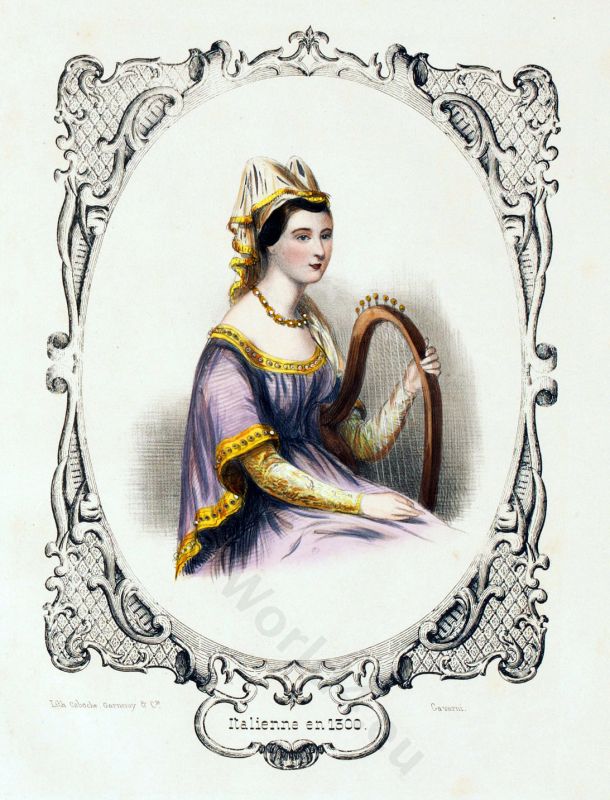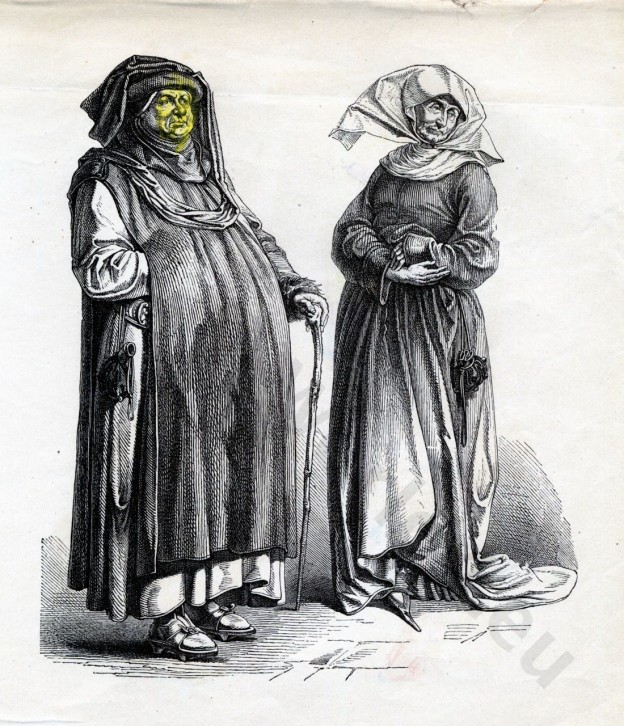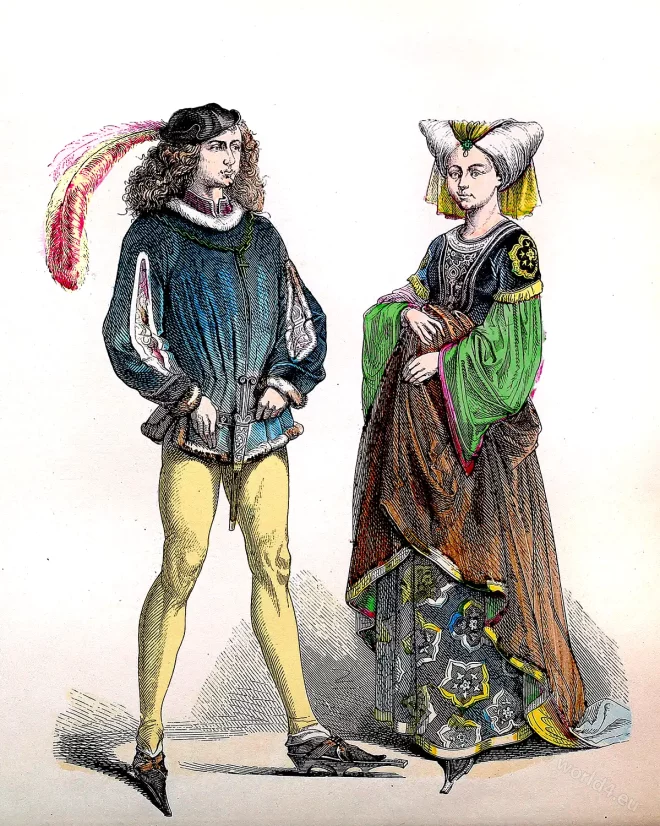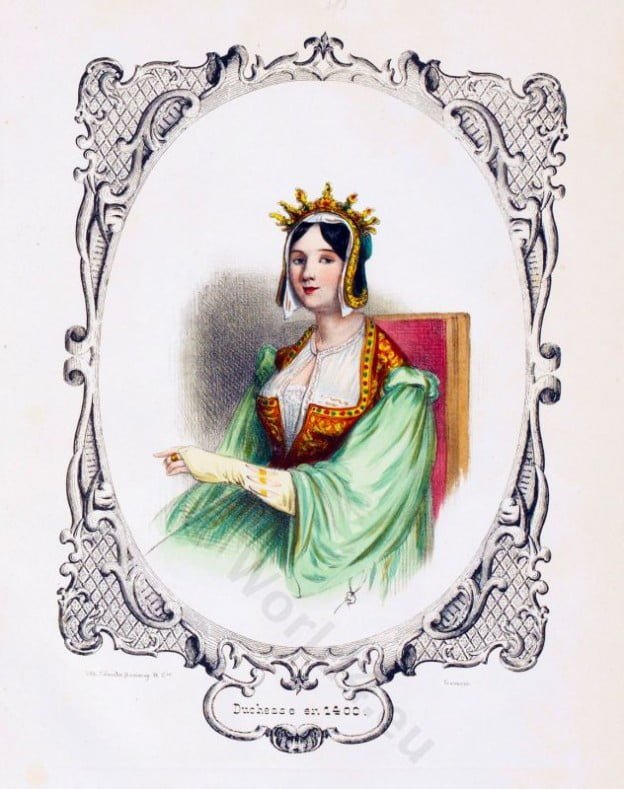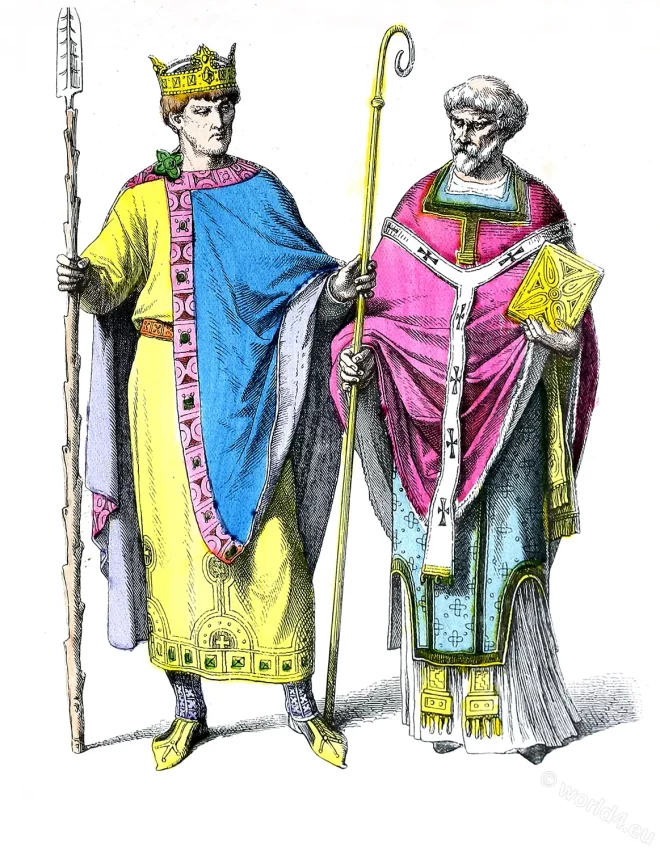French fashion history. Middle Ages. 1422 to 1483. Reign of Charles VI, called the Beloved (French: le Bien-Aimé), Charles VII, called the Victorious (French: le Victorieux) and Louis XI. called “Louis the Prudent” (French: le Prudent).
Category: Middle Ages
Middle Ages costumes and fashion. Period between 700 to 15th century. Style of Byzantine, Carolingian, Romanesque, Gothic and Renaissance.
The Carolingian fashion period 752-987. Reign of Charlemagne.
Reign of Charlemagne – The women of the tenth century wear two tunics – Judith’s belt – A veil is obligatory – Miniatures in the Mazarin Library- Charles the Bald’s Bible Shoes – Dress of Queen Lutgarde – Dress of Rotrude and Bertha – Gisla and other kings women of the Emperor – The Successors of Charlemagne – Cannes – Adelaide of Vermandois – The dress of widows.
Italian noblewoman with heart shaped hennin. 13th century.
Italian noblewoman. Burgundy fashion era. Medieval 13th century clothing. Here hair is confined by a net called a crespine or crespinette. She wears a headwear, the white colored barbette with veil (Still seen on… Read More
German knight on horse. Middle ages. 12th c.
On the armor or corslet he wears a surcoat. Hauberk, boiler cap, leg braces, knee tile, almond-shaped shield.
German Gothic Fashion. Citizens in 1440.
German Citizens 1440. They represent the reformation time. This means that the materials were cheaper and coarser.
Burgundy fashion. France nobility 1480.
The fifteenth century was an exaggeration of the modes of the fourteenth.
The Duchesse. French nobility. 14th c..
The woman wears a tight-fitting bodice, furthermore the pleated Chiopa with wide cap sleeves.
Medieval gothic costumes. German princess and maid of honor, 1350.
The princess wears a one-piece, front buttoned dress Cotehardie called, with long tight sleeves and wide neckline (front and rear). Buttons presented at that time a novelty, instead of the lateral lacing allowed a figure-hugging dresses section.
Byzantine Dalmatic, Ecclesiastical Costume 12th Century.
Byzantine Dalmatic, Ecclesiastical Costume Byzantine Dalmatic, said to have belonged to Leo III., but probably dating from the Twelfth Century, preserved in the Treasury of St. Peter’s at Rome. Upon… Read More
Frankish King Henry II., and Bishop of the 11th century.
Figure of Frankish King Henry II., 973-1024, called the saints and a Frankish bishop.


